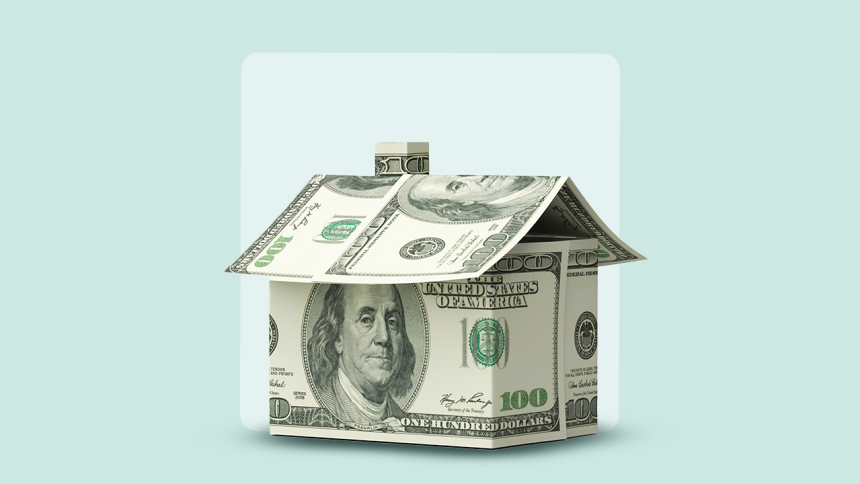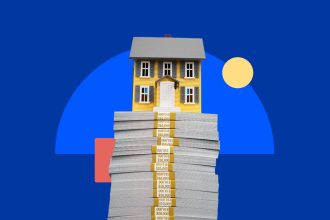Key takeaways
- Refinancing in today’s current rate environment isn’t for everyone, but there are several reasons why it could be for you.
- People refinance for reasons beyond the rate. These include tapping equity, changing the loan type and removing a co-borrower from the mortgage.
- Rates aren’t expected to drop much in 2025, but there could be pockets where they dip. Borrowers poised to take advantage of these dips could see some savings if they’re refinancing from a higher rate.
The amount of mortgage refinances has drastically slowed since the low rates of 2020 through 2022. The 30-year mortgage rate has hovered in the high-6 percent and low-7 percent range since 2023, according to Bankrate’s weekly survey, with periodic crests and falls. It’s likely that rates will stay stuck in this range for most of 2025, say experts surveyed by Bankrate.
Yet, there are still reasons where it might make sense for you to refinance now. Let’s dig into them.
Is refinancing right now a good idea?
For most mortgage holders, refinancing right now would not lead to a lower mortgage rate. Over 84 percent of mortgage holders have a rate below 6 percent, according to a report from Realtor.com. As a rule of thumb, you want to refinance to a rate that’s at least 1 percent lower than your current rate. That’s because refinancing isn’t free — you’ll pay closing costs, and with a 1 percent drop in your rate, it can still take one to three years to break even.
For example, say you had a remaining loan balance of $390,000, and you were charged a 1 percent origination fee along with another $1,000 in closing costs. You also paid one mortgage point. At that rate, it would take you approximately 20 months to break even.
As of May 28, the average rate on a 30-year purchase mortgage was 6.94 percent, according to Bankrate’s weekly survey. That means you’d ideally want to refinance to a rate of 5.94 percent or below — a rate we haven’t seen since 2022. Even though rates aren’t dropping below 6 percent in the short-term, there may still be reasons to refinance. For instance, if you got a mortgage when rates were closer to 8 percent, like at the tail end of 2023, a refinance now could save you money.
Refinancing now might still make sense for these types of borrowers
Refinancing isn’t a one-size-fits-all thing. For many people, refinancing may not be a clear-cut, lower-rate decision. Here are a few examples of when refinancing in a high-rate environment might make sense.
Situation #1: Your finances have improved
Along with overall market factors, interest rates are determined by your own personal finances. Your credit score and debt-to-income (DTI) ratio are going to impact how favorable of a rate you get.
Let’s say you got a mortgage at the tale end of 2022, when rates were reaching a high point, and put 5 percent down. Your credit score at the time was 650, and you had a DTI ratio of 36 percent. Because of your finances, you landed a mortgage with an interest rate of 7.35 percent.
However, since then, let’s say you’ve managed to pay down your debt and build your credit score to 750. If you’re able to secure a mortgage at 6.5 percent or below, especially if you plan to stay in the home long-term, you could refinance to lower your payment.
Situation #2: You want to change your loan type
Refinancing to a different loan type may be beneficial, even if the rate isn’t that much lower than what you’re paying now. For instance, if you have an FHA loan, you may be paying an annual mortgage insurance premium (MIP) on top of your mortgage payment. Depending on how much the mortgage insurance is, refinancing may be beneficial to remove it.
Similarly, if you have an adjustable-rate mortgage (ARM) and the introductory rate is about to end, refinancing to a fixed-rate mortgage could make your payments more affordable and more predictable. In 2020, over one million ARMs were originated, according to Home Mortgage Disclosure Act (HMDA) data. Once the intro period ends on an ARM (which usually ranges from three to 10 years), they switch to a variable rate that is often higher than the current fixed mortgage rate. This makes refinancing before the intro rate ends an appealing move.
Situation #3: You want to remove a co-borrower
If you share a mortgage with someone else, and you need to remove them, you may want to refinance. This is pretty common when married couples get divorced. You may need to buy out the other borrower, which could be done through tapping equity when refinancing.
However, it’s important to know that there’s a difference between removing someone from the mortgage and removing their ownership rights. You can remove a co-borrower by refinancing, but you’ll still need to file a quitclaim deed to negate their ownership rights.
Situation #4: You need to cash out equity
Your home is an asset that you can tap to pay for major expenses. College tuition, home improvements, medical care — these are just a few common reasons people refinance to tap their home equity. But why would you opt for a cash-out refinance versus getting a home equity line of credit (HELOC) or home equity loan?
First off, refinance rates are lower than HELOCs or home equity loans. The catch is that you’d be replacing your primary mortgage with a new mortgage that could have a higher rate. This isn’t as much of a big deal if you’re towards the end of your primary mortgage term or if your home is paid off.
Questions to ask yourself before refinancing in a high-rate environment
Before you opt to refinance in the current rate environment, you need to ask yourself some questions to determine your goals:
-
What’s your break-even timeline? If you’re trying to refinance to lower your payment, you need to know how long it will take to realize the savings after closing costs.
-
How long do you plan to own your home? You’ll want to stay in the home long enough to break-even and realize savings from refinancing.
-
Do you plan to refinance again if rates drop? Ask yourself — what if rates fall further in 2026 or 2027? Will you be willing to refinance again?
-
Would tapping equity with a HELOC or home equity loan be better? If you want to cash in on your home’s equity, ask yourself what the best option is. Would you prefer to refinance and replace your current rate, or would it be better to keep your current primary mortgage and get a second lien?
-
Should you buy points? Mortgage points help lower your rate further, but you have to pay for them. This increases your break-even time, but will result in you paying less interest overall. However, if you decide to refinance again or sell the house, you may not see as much of a savings from buying points as you hoped.
Read the full article here














